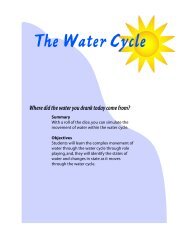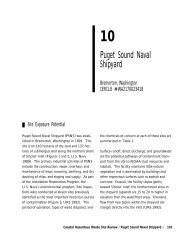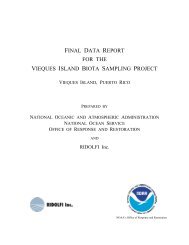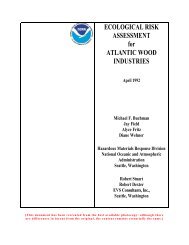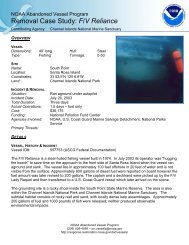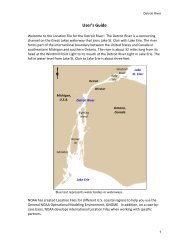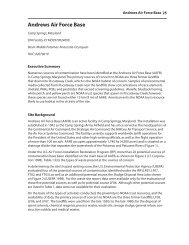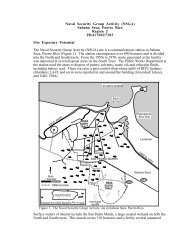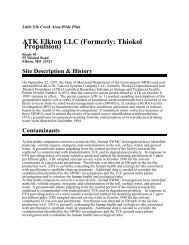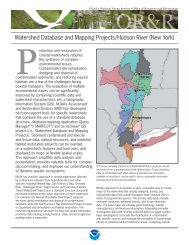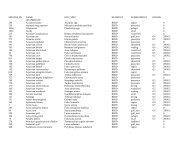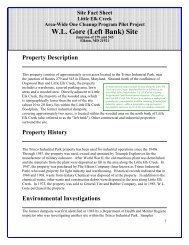The Coastal Resource Coordinator's Bioassessment Manual
The Coastal Resource Coordinator's Bioassessment Manual
The Coastal Resource Coordinator's Bioassessment Manual
Create successful ePaper yourself
Turn your PDF publications into a flip-book with our unique Google optimized e-Paper software.
HAZMAT 93-1–Bioaccumulation<br />
CHAPTER 4<br />
BIOACCUMULATION<br />
INTRODUCTION<br />
Bioaccumulation is the net result when the uptake of a chemical by a biological organism<br />
exceeds the depuration of the chemical from the organism. Uptake may occur directly from<br />
the air, water, soil, or sediment via absorption or indirectly through the ingestion of food<br />
containing the chemical. Bioconcentration is the process by which a chemical is directly<br />
taken up (by absorption only) from water and is accumulated to levels greater than those<br />
found in the surrounding water. Biomagnification is the increase in tissue concentrations<br />
of a bioaccumulated chemical as the chemical passes up through two or more trophic levels.<br />
A chemical is usually considered capable of being biomagnified if concentrations of the<br />
chemical increase by more than an order of magnitude at each step up the food chain.<br />
DDTs, polychlorinated biphenyls (PCBs) and mercury are among the few chemicals for<br />
which there is evidence of biomagnification.<br />
Bioaccumulation studies take many forms. <strong>The</strong>y may simply involve the measurement<br />
of tissue residues in indigenous organisms, or they may involve the measurement of tissue<br />
residues in test organisms exposed to contaminated environmental media (water or<br />
sediment) for a specific length of time. This exposure may be accomplished either by<br />
transplanting the test organisms to a contaminated area or by exposing them in a laboratory.<br />
<strong>The</strong> results of these types of studies are generally reported as the concentration of the<br />
chemical per unit weight of the organism (body burden) or some component of the<br />
organism.<br />
Another type of bioaccumulation study uses artificial organisms (e.g., lipid bags). <strong>The</strong>se<br />
artificial organisms are exposed to contaminated water or sediments for a specific length of<br />
time and then the concentration of the chemical(s) of concern in the lipid are measured.<br />
Since artificial organisms only take up chemicals through absorption, they only measure the<br />
potential for bioconcentration of the chemical(s). In studies with artificial or real organisms<br />
when the only route of uptake is through absorption (not through ingestion) the results are<br />
often reported as a unitless bioconcentration factor (BCF). <strong>The</strong> BCF relates the<br />
concentration of a chemical in an organism (real or artificial) or component of an organism<br />
to the average concentration found in the surrounding water.<br />
4-1 November 1992



